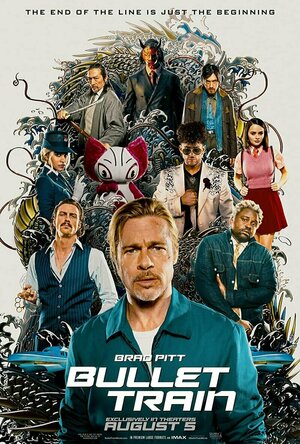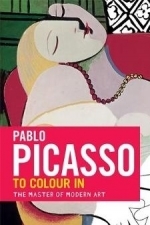
Skateboard Party 2 Lite
Games and Sports
App
Skateboard Party 2 brings all the fun of skateboarding to your mobile device allowing you to ride in...

Scanner for Me
Business and Utilities
App
Scan, print and manage documents with your iOS device! Using only your iPhone or iPad you can...

Thirty Days & Seven Seas – Pirate Battle Board Game Starring Clarence, Jeff and Sumo
Games and Entertainment
App
From the creators of "Monsters Ate My Birthday Cake"... Ahoy, mateys! Join Clarence and friends on...

Teeny Titans - Teen Titans Go! Figure Battles
Games and Entertainment
App
"There’s a very Pokemon vibe running through Teeny Titans…The game’s battles are much more...

Currency Exchange - Currency Converter
Travel and Finance
App
Currency Exchange is powerful and elegant Currency Converter application for your iPhone & iPod...

BMO Snaps - Adventure Time Photo Game
Games and Entertainment
App
It’s Adventure Time! Help BMO on an epic quest to save the Land of Ooo from hologram clones of...

The World Ends with You: Solo Remix
Games
App
SUPPORTED DEVICES iPhone 4, iPhone 4s, iPhone 5, iPhone 5s, iPhone 5c, iPhone 6, iPhone6 plus and...
Taryn K (444 KP) rated Otherworldly Izakaya Nobu Volume 2 (manga) in Books
May 15, 2022 (Updated May 15, 2022)
The book starts off with one of the soldiers from volume 1, Hans, stopping by the pub after training only to find out it's 'Kisu Day'. Hans is surprised to see Chef Nobu deep frying the tempura-battered fish and putting it on paper, which is a very expensive commodity in Aitheria. The little details really make this series special, I think.
In chapter 2, "Thief", we meet a new helper, a young girl trying to help out her family, named Effa. There is a bit of confusion, but we get to meet the new deacon in town, who has already become a regular.
Chapter 3, "An Uninvited Guest", Chef Nobu learns a 'new' recipe, and we are reminded that Shinobu can cook as well. A pompous little man and his gourmet aristocrat boss stop by in search of the Ankake Yudofu that pleased the bride-to-be in volume 1, as she praised it at her wedding. Each chapter builds ties to other people or builds ties between Shinobu/Chef and the regulars, which Is another thing I love. Ankake Yudofu is out of season, as it is no longer winter, so schnitzel is apparently just the ticket, if Chef just knew what it is.
Chapter 4, "Quarreling Craftsmen", sees two new characters introduced. Holga, a glassmaker who heard about Izakaya Nobu from the tax collector Gehrnot, who enjoyed the 'Spaghetti Napolitan' in volume 1, and Han's father, a woodworker named Laurenz. They spend most of the chapter arguing and trying each other's dishes, but it is a friendly rivalry that gets settled down by a surprising person.
Chapter 5, "The Commander's Weakness", is hilarious due to more puns on squid than I ever thought could be made, but Commander Bertholdt has to conquer his fear of squid before his arranged marriage to the daughter of a fisherman. Such a good chapter. One of my favorites. "He squidn't!"
Chapter 6, "Effa in Wonderland", sees Effa going through the back door of the pub into modern Japan. Not much cooking in this chapter, but we find out a little more about how the pub ended up being in two places at once. Thankfully, she gets back to Aitheria safe and sound.
I'm not completely sure about this being a review as much as a rundown of what happens. It's just a feel-good series, with just a hair of drama, but nothing that can't be resolved in a chapter or perhaps two. The characters are likeable, for the most part, and those who aren't are meant to be unlikeable. The interpersonal relationships are fun to see revealed. Definitely a good pre-bed book. 😊
BankofMarquis (1832 KP) rated Bullet Train (2022) in Movies
Aug 10, 2022
They say this as if it is a bad thing.
Directed by David Leitch (DEADPOOL 2) with a screenplay by Zak Olkewicz (FEAR STREET: PART TWO) and based on the book Kotaro Isaka, BULLET TRAIN is (no arguing here) an Ultra-Violent action flick in every sense of the term, set on the famed titular Japanese Bullet Train and follows an operative by the codename Ladybug (played by Pitt who you know from such gentle fair as FIGHT CLUB and INGLORIOUS BASTERDS) who’s easy “snatch and grab” job is nothing easy thanks to the appearance of various other nefarious individuals who also are looking for that case.
Following in the footsteps of such similarily-violent flicks as NO COUNTRY FOR OLD MEN, TRAINING DAY, FARGO and just about anything Directed by Quentin Tarantino, Director Leitch uses the violence, mayhem and bloodshed to ADD to the story (which all of the aforementioned films also did with great affect) and not “just” to be violent. And that’s an important distinction here. If the ultra-violence is fun and important to moving the story and plot along (and not just there to be gratuitous), then the movie can succeed quite well - and this one does.
What also makes these types of movies succeed is the plotting - which is sharp by writer Okewicz - and the twists and turns that you do not see coming - but make sense along the way (and will reward the viewer upon repeated viewing) and Bullet Train does this as well. It is a smartly made film that is crisply directed with some terrific action sequences (though, if I’m being fair, at times the CGI is not as good as it could/should be), but it is entertaining as all get out.
Leading us through this mayhem is the always charming and charismatic Pitt who parlays the “goofball” personae of a person in just a little over his head but comes out on top due to luck (or skill) - you be the judge. Pitt is the perfect performer for the audience to become invested in as he is the one that you need to be rooting for throughout - and you do from just about the beginning.
Leitch, wisely then, surrounded Pitt with some terrific character actors in this venture. From Aaron Taylor-Johnson (KICK-ASS) to Brian Tyree Henry (GET OUT) to Joey King (THE CONJURING) to the always terrific Hiroyuki Sanada (MORTAL COMBAT) and a host of others who do extended cameos - and to name them would be to spoil the fun of them. They all understand what type of film they are in and all seem to be having a good time going along with it all.
And why not? Bullet Train is a delight in the cinema - for those of you who like action and violence that is pretty spectacular and over the top. It is a heckuva lotta fun.
Letter Grade: A-
8 Stars (Out of 10) and you can take that to the Bank(ofMarquis)
Hazel (1853 KP) rated Picasso: The Colouring Book in Books
Jul 15, 2017
...
Pablo Picasso: To Colour In was published in April 2016 with the intention of using the popular fad to educate readers/colouring book enthusiasts about the techniques and secrets of the great master. Each work included in the book has a brief paragraph explaining what it is (in case you cannot tell) and a few details about Picasso’s intentions or the events happening in his life at the time.
...
Naturally, it would be impossible to produce a book of all Picasso’s recorded works, but the editors of this particular colouring book have carefully selected examples that span the majority of his life, thus encompassing the different styles he experimented with.
The author of the text – presumably Frédérique Cassegrain, who also wrote the biography and information for each included artwork – gives helpful advice about how to colour in the outlined versions of Picasso’s paintings. The paper is thick enough to be suitable for paints, particular Gouache, which is water soluble and easily blended. Alternatively, coloured pencils may be used, preferably of artistic quality, which may be more suitable for those less confident in art and design. Another option, although not mentioned by the author, are felt-tip pens. Usually, these should be avoided due to ink bleeding through the page, however, the paper is single sided, so there is no chance of damaging the following colouring page in the book.
Purchasing Pablo Picasso: To Colour In and completing the book, provides not only hours of fun and relaxation, but an opportunity to discover and understand the artist. Unlike at a gallery where the brain may switch off, being able to go away and return to the book gives us time to absorb the information and concentrate more clearly on the details of each painting.
Opposite each colouring page is a copy of the original in full colour, meaning that, if one desired, one could replicate Picasso’s work as closely as possible. By doing, rather than just looking, we begin to understand the colour choices, piece together the geometric shapes to form an image and begin to understand the thought processes of the artist.
Interestingly, there are two paintings that stand out amongst all the others. These were produced during and after the First World War, a time when Picasso returned to a more classical style of artwork. These are The Pipes of Pan (1923) and The Bathers (1918). Both show a completely different side to Picasso and would not immediately be recognised as his own work. Despite not being entirely life-like, there are no elements of Cubism or Surrealism and the colour palette is altogether natural. Picasso has focused on shading and tone to create a realistic appearance, a contrast to the flattened portraits he is known for.
...
Pablo Picasso: To Colour In will appeal to artists, art historians and other creatives with its contrast of light relief and in-depth knowledge. The book is available online at retailers such as Amazon and The Book Depository from approximately £6. If Picasso is not your thing, there are other artists available in the series of colouring books, including Klimt, Hokusai (Japanese Art), Monet, Van Gogh, Caillebotte and Manet (Impressionists), and Paul Klee. Whatever your preference, prepare to learn whilst you are relaxing and having fun.


